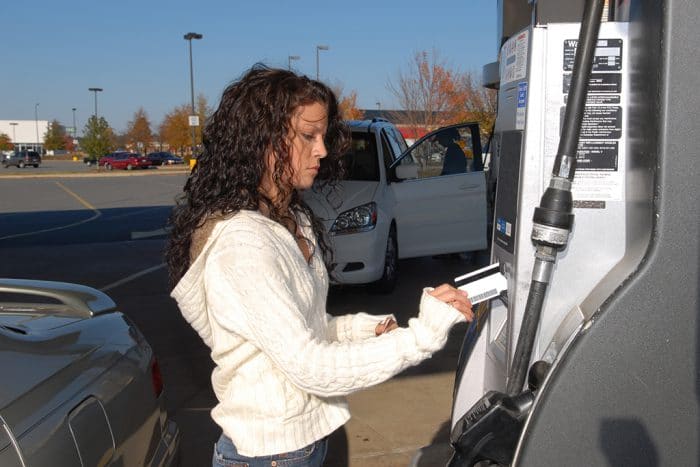Frequently pay at the pump?

Frequently use an ATM or pay at the pump? How to protect yourself from skimming, a type of fraud that’s on the rise.
Skimming is when a criminal attaches a scanning device to a card reader slot to record account details from a payment card’s magnetic strip. Once the information is captured, criminals use the details to create a cloned card.
Gas pumps are particularly attractive to thieves using skimmers because their low visibility to personnel makes it fairly easy for crooks to install and retrieve a skimming device. There’s also a high volume of traffic at the pump—37 million Americans refuel every day, and 29 million of them pay with a credit or debit card.
Here are some steps you can take to protect yourself from skimming at an ATM or gas pump:
Inspect the card reader and the area near the PIN pad. Here are things to watch for:
- Front of the reader. Look for any changes to the face or frame of the machine, such as, holes and cracks, indicative of a camera to steal card information.
- Card Slot. Difficulty inserting the debit card into the card slot, change to the slot appearance, or signs of damage such as a loose card reader.
- Keypad. Changes to the appearance of the keypad, brighter buttons or the button shape has changed in color, or it doesn’t seem to fit flush or match the rest of the card reader.
- Overlay. The entire plastic frame around the monitor has an overlay attached over the original frame of the card reader. The overlays typically have brighter buttons, the shape of the buttons are different on the keypad, and buttons on the sides located on the left and right of the screen.
If you think the scanning device doesn’t look like it matches the machine’s color and style, it might be a skimmer. In addition, pay attention to the security seal across the fuel dispenser door. If the seal is broken, torn, peeled back or flaring at the edges, do not proceed with the transaction and notify the merchant or a banker right away.
Avoid using your PIN.
When given the option to use your card as credit or debit, it’s best to choose the credit option. That way you’re not entering your PIN in sight of a possible card skimmer camera.
Consider going inside to pay.
While paying inside is not as convenient, there is less chance a fraudster placed a card skimmer on the payment terminal in front of the clerk.
Keep an eye on your accounts.
Have a regularly scheduled time, like every week, when you look over your bank and credit card statements for anything out of the ordinary.
We make is easy for you to stay on top of your accounts
With so many fraudsters out there, it’s important to keep up-to-date on your account activity. Our free mobile banking app puts access to your account at your fingertips. An easy way to stay connected to your accounts is by setting up automatic alerts, which can be sent by text, email or through the mobile app. For example, you can select alerts like when your account falls below a certain balance or there’s a transaction greater than a set amount. You can even set it to alert you of all transactions.
You can also choose daily, weekly, or bi-weekly intervals for automatic notifications about account activity, such as account balance and transaction history.
To set up alerts, you can log in to Online Banking and click on the Mobile Manager tab. Under the Mobile Banking Profile section, click Enroll Now. If you have the mobile app and want to set up alerts, log in and select the More icon to choose your alerts.


